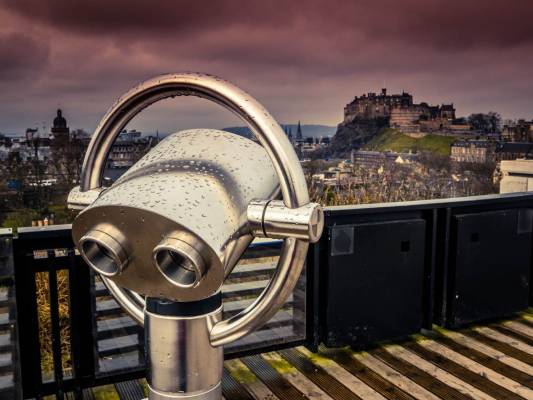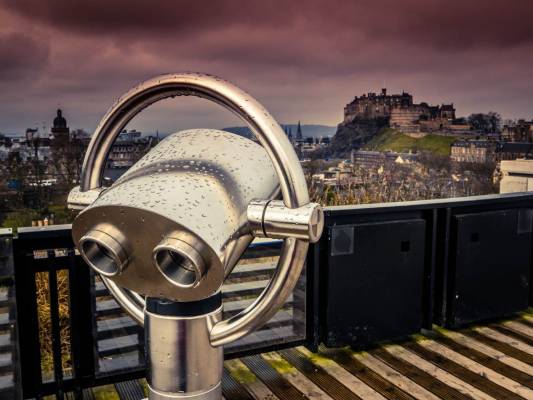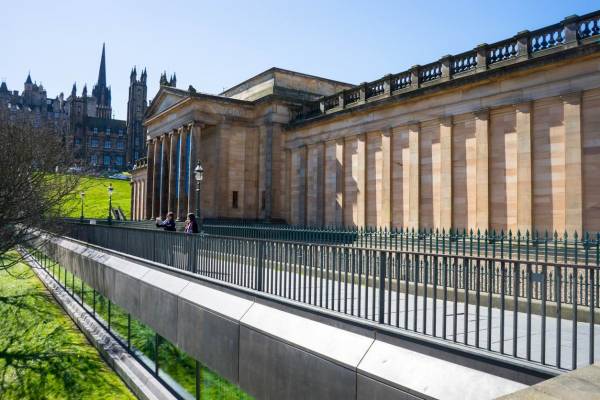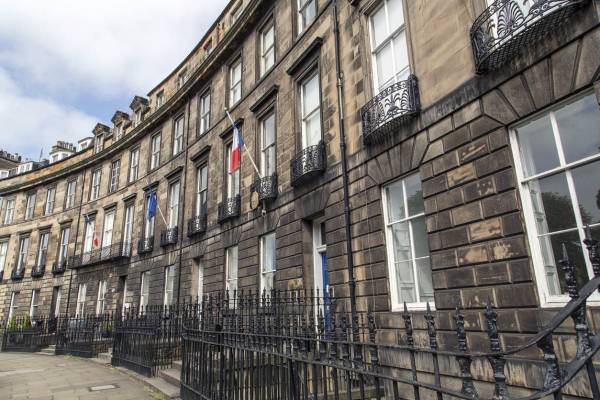
Apartment Living: An Architectural Guide to the City of Edinburgh

With its iconic architectural landscape, Edinburgh is a beautiful sight to behold, whether you are a lifelong resident of the city or new to the capital. Edinburgh is in fact known and loved for its architecture, and its design diversity can be seen on every street from the medieval Old Town to the Georgian New Town, both of which are UNESCO World Heritage Sites.
Taking a walk through Edinburgh is to take a walk through history, and while the buildings that line its streets are beautiful to look at, they are made all the more fascinating by the stories that lie behind them.
Let’s take a closer look at the very best of old and new.
Neo-classical public buildings
The vision of architect David Rhind, the local government buildings and churches found throughout the New Town showcase the neo-classical style that became incredibly popular in the Scottish capital during the 18th century. Inspired by the awe-inspiring landmarks of classical antiquity, Rhind’s work includes famous buildings such as Stewart Melville’s College (formerly Daniel Stewart’s Hospital), The Dome on George Street, the Watt Institution (which forms part of the present day Edinburgh Sheriff Court) and the Commercial Bank of Scotland, also on George Street. From the middle of the 18th century neo-classical Edinburgh began to take shape and even today many of the new building work carried out in the capital is designed to complement and continue the neo-classical theme..
Influenced by Greek architecture and characterised its dramatic use of columns and blank walls, Edinburgh’s neo-classical architecture earned the city a reputation for being the ‘Athens of the North’ when first introduced.
Georgian townhouses
The New Town may today be filled with the hustle and bustle of high street retail, but it was originally designed as a purely residential space. The prosperity in Scotland during the 18th century demanded that the rich and influential had ample accommodation and this meant the construction of the Georgian townhouses that can still be seen today. Thanks to strict building regulations, features such as the cobbled roads, and sandstone facades have been preserved – as have the iron railings that can be seen in many corners of New Town.
For many people, it is architect William Henry Playfair, son of architect and designer of Melville Castle James Playfair, that first masterminded the Georgian architectural takeover, and he is responsible for designing Royal, Carlton and Regent Terrace, three areas that remain premier postcodes in Edinburgh. These extremely grand terrace houses are characterised by their classic appearance, symmetry, strong kerb appeal and of course their Venetian window style, all factors that have given then an enduring popularity and a premium on price.
Of course, by today’s standards these grand homes do have their drawbacks in terms of energy efficiency and costly maintenance. Nevertheless, they are indicative of a period in history when Edinburgh was growing rapidly and establishing itself as the cosmopolitan city we see today.
Medieval landmarks
Edinburgh’s Old Town is a site of genuine historical and architectural importance. Thanks to the undulating terrain of the city, residents and visitors are rarely far from a spot where they can glimpse the castle atop the hillside. At the centre of the Old Town is the Royal Mile, which from end to end is a promenade through a rich and illustrious history.
Although the tourist shops, restaurants, bars and cafes have altered the feel of the Old Town (and certainly improved the levels of cleanliness) since the middle ages, the steep and narrow wynds off the main streets still hint at a more rudimentary past developed in line with the topography of the area. Interestingly, the contours of the land (carved out during the last ice age) placed certain restrictions on the land and forced the early architects into developing the first “high rise” multi-storey residences.
The old town includes not only the Royal Mile but also West Port, Grassmarket, Canongate and Holyrood.
Baronial style
Baronial architecture was in and out of fashion in Edinburgh from the 16th century up until the early 20th century. Early examples were heavily influenced by what can be described as the “fairy-tale castle” with turrets and gables, plaques and carved stonework. Originally used outside of the city in grand country houses and grand mansions, architects soon began to add a touch of the ostentatious to the urban environment.
In the 19th century, figures such as Sir Walter Scott encouraged the return of the Baronial style in line with the Gothic revival – a trend that continued until the start of World War 1. In the Marchmont district of Edinburgh this architectural style can be seen in the impressive multi-storey tenement buildings – precursors to the more industrial tenements that became popular throughout inner-city Scotland.
Modern apartment buildings
Alongside the neo-classical, Georgian and Scottish Baronial architecture, and the residential architectural styles, it is possible to identify many other influences woven into the fabric of Edinburgh’s architecture over the centuries. From Art Nouveau to Art Deco, it is hardly surprising that such a vibrant and cosmopolitan city boasts so many ideas.
As we march on into the 21st century, Edinburgh is seeing the very best of modern architectural design. From the New Scottish Parliament building to the Museum of Scotland, Richard Murphy’s “box of tricks” house to Quartermile, innovation and ambition are alive and kicking in the capital.
Characterised by their stylish and high specification interiors and modern, glass exterior, the residential and commercial spaces at Quartermile offer panoramic views over The Meadows.
Building a new community isn’t always easy. Of course, it can take time for the right atmosphere and spirit to develop amongst residents who are new to an area. Yet at Quartermile, the arrival of cafes, gyms, nurseries, hotels and other amenities have given the development and instant sense of home. Designed by the award-winning Foster & Partners, Quartermile is now approaching the final stages of a 10-year plan to create Edinburgh’s most desirable new district. But it’s not all about clean lines and building materials, Quartermile offers function as much as fashion; substance as much as style. With spacious, open-plan apartments, impressive energy efficiency, a concierge service and comprehensive underground parking facilities, no stone has been left unturned in the pursuit of high quality urban living.
If you would like to find out more about Quartermile’s luxury apartments, why not arrange a viewing today by calling 0845 000 2525. Alternatively, email This email address is being protected from spambots. You need JavaScript enabled to view it. and we’ll be happy to help guide you through the latest release of apartments at the development.




